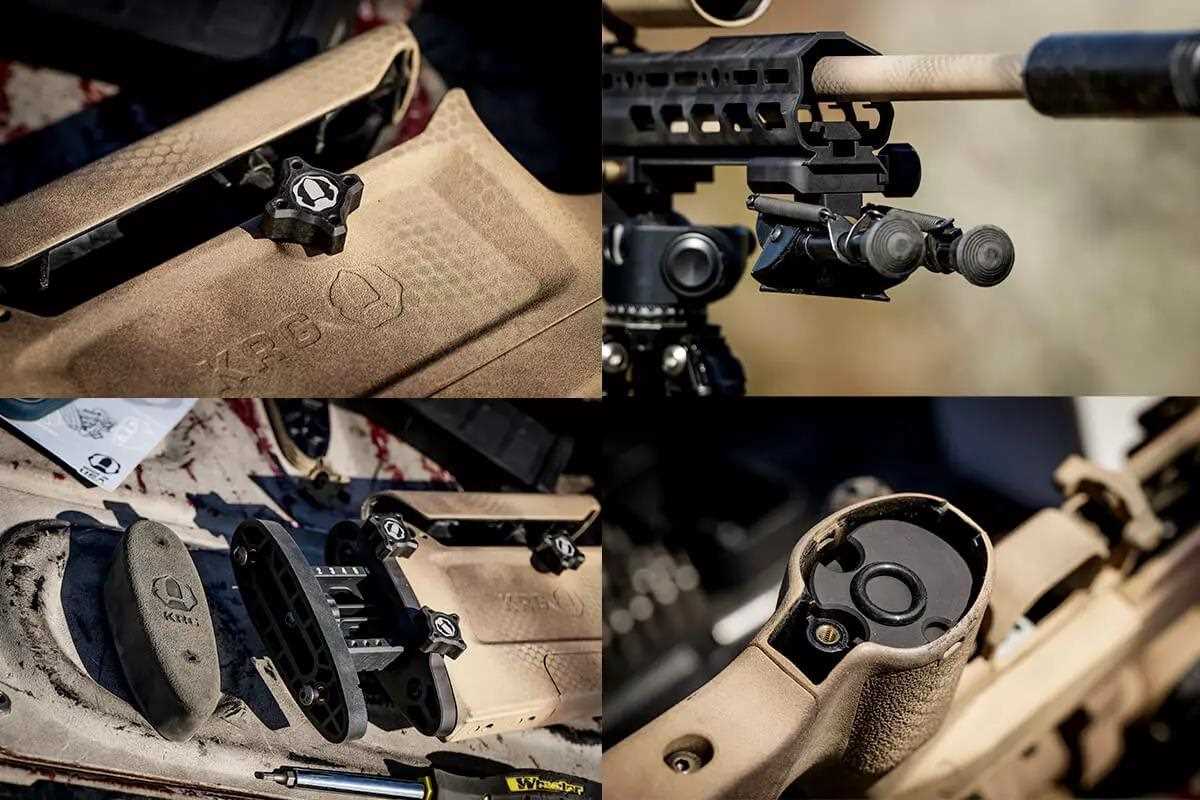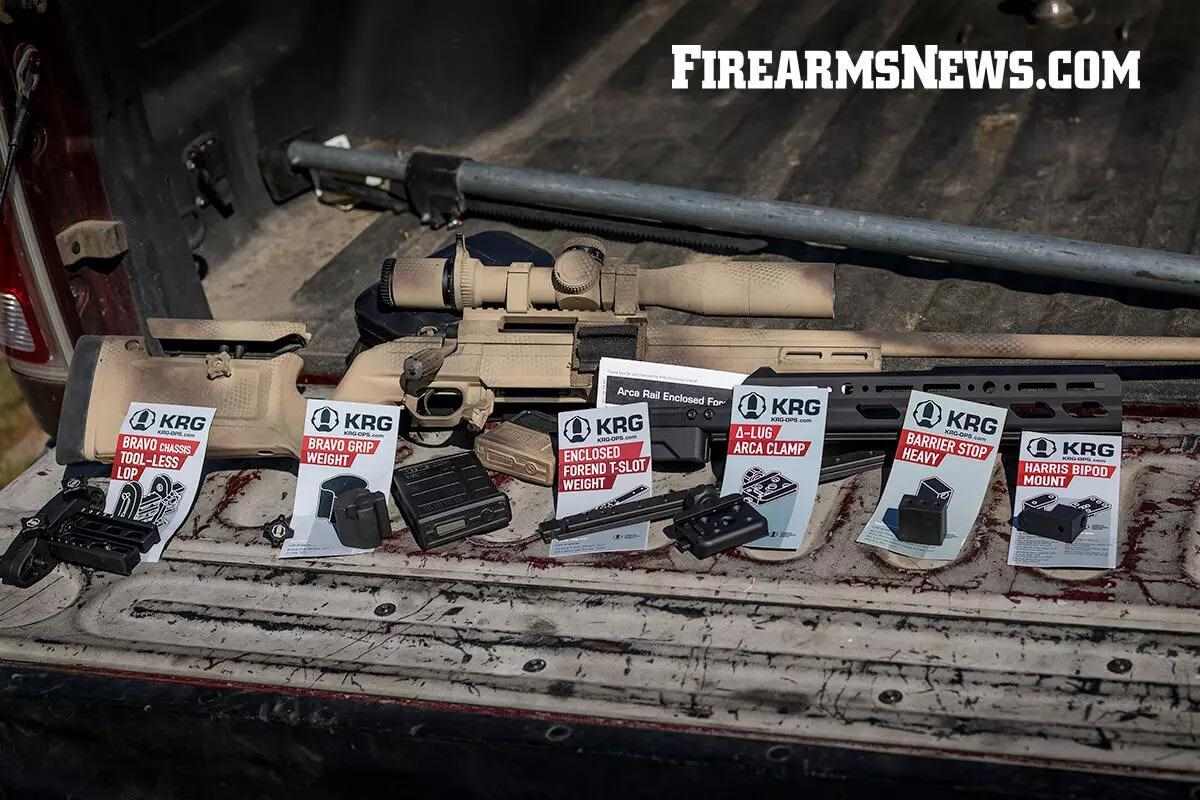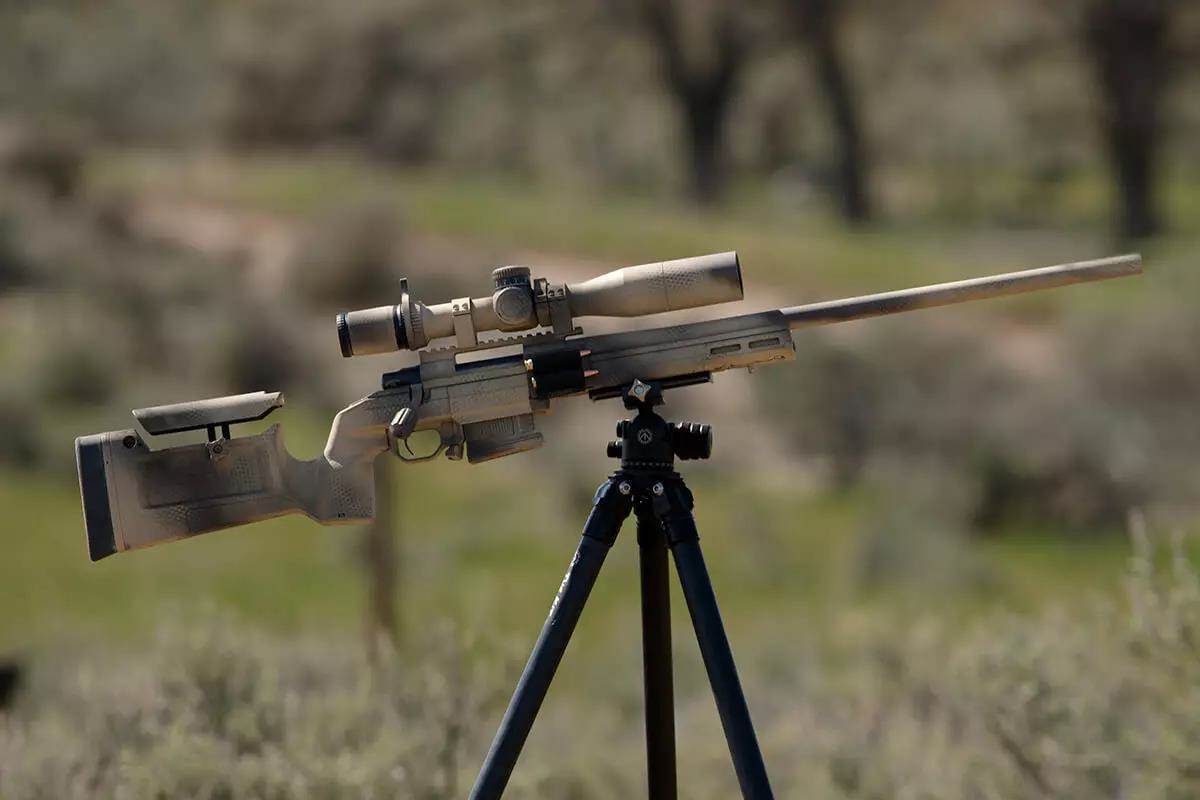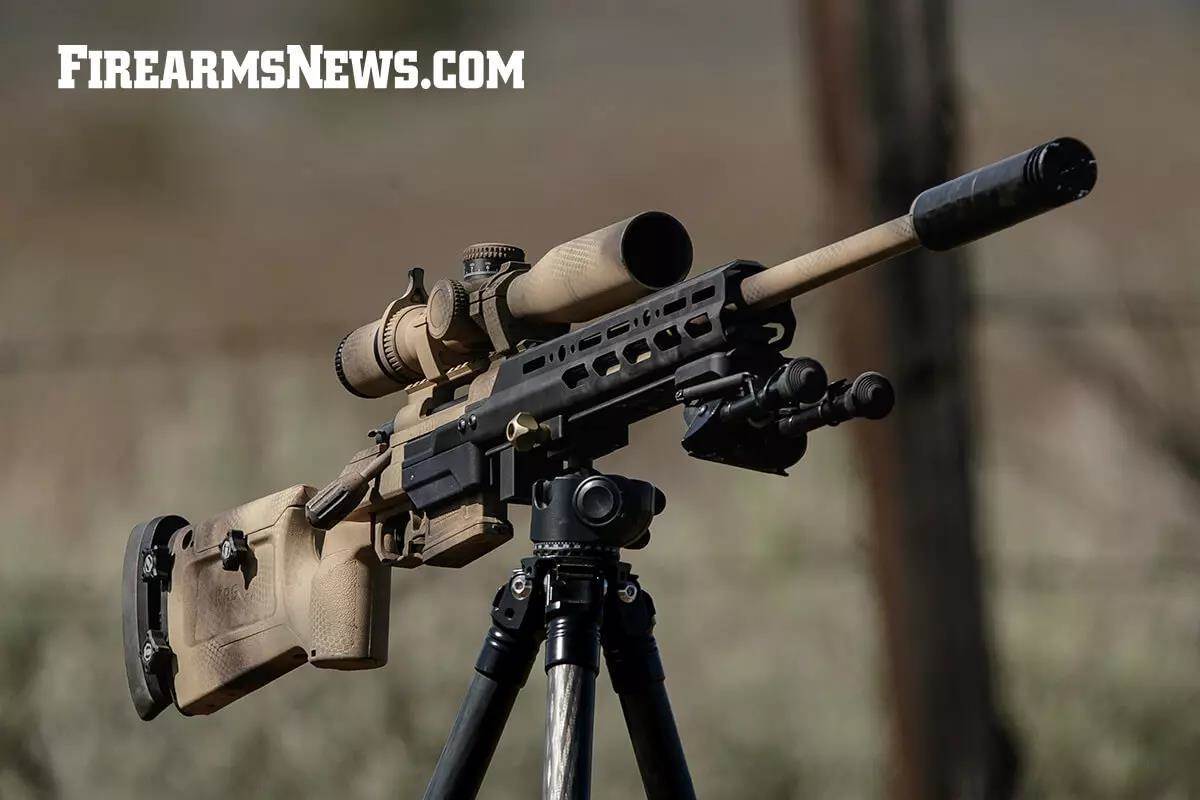Affiliate Disclosure: This page contains affiliate links. We earn from qualifying purchases.
It’s been just more than a year since I wrote about building a Budget PRS Rifle for less than $2K with an optic included. It’s been a great rifle and has done its job well, but in that time I’ve saved up enough money again to start thinking about additional upgrades. I started with a couple cans of Rustoleum paint to switch up the aesthetic from plain black to camouflage, and then I started window shopping for some accessories I liked at first but couldn’t justify on the initial build. Just like when I first built the rifle, I set a budget, and I chose to stay under $1,200 before sales tax – which is the same amount I spent to build the rifle in the first place, not including the optic. When considering upgrades, I knew I wanted to reduce recoil and make the rifle more user friendly from person to person. When it comes to recoil, the 6.5 Creedmoor is comparatively soft shooting, but further mitigation is never a bad thing. This barrel is already threaded ⅝-24, so adding a muzzlebrake is the simplest upgrade. I have owned a SilencerCo Omega 300 suppressor for a few years now and have used it on this rifle, but it’s not always ideal, as it creates a lot of mirage when hot. The perfect middle ground, in my opinion, is to use a SilencerCo ASR muzzlebrake. Their three-port design is impressively effective in reducing perceived recoil, and as far as performance brakes go, they’re probably one of the best bang-for-the-buck options on the market. Brownells sells them for just less than $80. Not a bad deal, especially when I can still mount the suppressor if I want to.
Read “How to Build a Budget PRS Rifle for Under $2K: Optic Included” Here
Adding some weight to a rifle is another way to reduce recoil. When it comes to adding weight to a rifle, there are a number of options out there for most rifle builds. Steel blocks can mounted onto M-LOK slots for chassis builds like the KRG Bravo Chassis I used. These blocks are machined to specific weights, allowing the user to balance the rifle to their liking. At its base, the Kinetic Research Group (KRG) Bravo chassis doesn’t weigh much, nor does it have many M-LOK slots. That could at first seem a negative, but let’s consider what it was designed for. It’s a base-model budget-friendly option that bridges the gap from traditional stock to heavy-duty performance chassis. KRG also has a number of offerings in their X-Ray, Whiskey, or C4 lines if you want more out-of-the-box features. But if you’re working on a budget from year to year, your upgrades can be had as finances allow. This wasn’t lost on KRG, and they have designed an entire lineup of accessories to add functionality and weight to their already existing chassis like the Bravo.
KRG PRIMO ARCA Enclosed Forend – $324.99
KRG has what they call their “Primo” configuration for the Bravo chassis. This configuration consists of the Bravo Chassis plus the following parts to increase form and function. The KRG Enclosed Forend was the most eye-catching part of the whole upgrade to me. Machined from 6065 Aluminum, this forend takes the place of its factory counterpart and extends the overall length by an additional four inches. The full-length ARCA dovetail rail interfaces with KRG’s new proprietary Delta Lug system. The Delta-Lug system works by offering the shooter multiple locking points along the ARCA rail to mount and move various accessories at the push of a button. Also along the bottom of the rail are a number of drilled and tapped holes designed for hard-mounting KRG’s wide variety of accessories. As its name suggests, its enclosed design shrouds the barrel with M-LOK slots on top to mount any variety of night vision, thermal, or other optic add-ons. Additional M-LOK Slots on the sides and bottom offer a heck of a lot of real estate for mounting additional shooting accessories.
BRAVO Tool-Less LOP – $299.99
The Bravo Tool-Less LOP upgrade offers the user exactly what it sounds like: Quick and tool-less length of pull adjustments from 14 inches to just less than 16 inches thanks to thumbscrews and detents. Not only does it allow for length adjustments, it also features tool-less height and cant adjustments for the buttpad itself. These incremental vertical and lateral adjustments offer a “custom-to-you” fit, which lends itself to repeatability for the shooter.
Aluminum Machined Thumbscrew – $24.99
The least expensive part of this entire upgrade series, the Aluminum Machined Thumbscrew is just one more part purposefully designed with reliability in mind. While the molded plastic-headed thumbscrew the Bravo comes with is stout, its aluminum counterpart is even more so, not to mention it aesthetically matches the LOP thumbscrews. For those making constant on-the-fly adjustments to their rig from one position to another, the aluminum machined head gives sure grip and peace of mind in all conditions.

HEAVY
Converting the Bravo stock to the Primo configuration added a little bit of weight, but for what I want, it could still be a bit heavier. KRG has a whole tab on their website dedicated to heavy accessories to pair with the chassis. Price points on these may seem a little high at first, but again, it’s worth the reminder that these are specifically designed to fit in the unique nooks and crannies KRG integrates into their chassis systems. Where most add-on weights increase the external dimensions of your stock or chassis, these maximize weight and minimize bulk. Since I went with the Tool-Less LOP in the buttstock, I was not able to incorporate the Bravo Rear Weight Set. Not a big deal, as I would rather have the Tool-Less LOP bring its own added weight. I did elect to go with the Bravo Grip Weight ($48.99), which adds 13.6 ounces into my hand, and the Enclosed Forend T-Slot Weight ($114.99), which adds a full 16 ounces of steel to the front end and interfaced with the Bravo’s aluminum skeleton. The last heavy accessory I added was the Heavy Barrier Stop ($46.99). I chose to hard-mount it directly in front of the magwell with the included screws, which added another 5.76 Ounces to the rifle.

At this point, I’m well under budget and I’ve seen a couple more upgrades on KRG’s website I’d like to add. My old Harris bipod no longer has a lug to mount to, as the Enclosed Forend doesn’t come with one. I solved this issue with KRG’s Harris Bipod Direct Mount ($39.99). I mounted that to one of their Delta-Lug ARCA Clamps ($169.99) which made for a quick-attach, quick-adjusting bipod that I can place anywhere along the ARCA rail at the press of a button. The last upgrade was their Two Round Quiver ($29.99). This was a much more solid option than the cheap elastic and Velcro quiver I had mounted before. I dialed the resistance in and mounted the unit to the side of my Enclosed Forend. This will keep two additional rounds close and at the ready at all times.
Recommended
Final Thoughts

Building this rifle last year showed me what could be achieved with a little effort and some quality, yet affordable parts. This year, taking the same base budget as I had for the rifle itself, I’ve now upgraded it to maximize performance and usability. I started with a rifle weighing 11.7 pounds empty. Now, with all the new features, it weighs in at 15.8 pounds. Between the muzzle brake and the added weight, recoil is now a complete afterthought. The additional weight difference offers more stability in any firing position. Whereas the rifle would bounce on the bipod before, that has now been almost entirely eliminated, so I can focus more on fundamentals and spotting where my bullet impacts. Yes, lugging this rifle around all day at a match will be a workout, but the benefits far outweigh the added weight. There is no replacement for solid fundamentals, but making sure your equipment is set up to its full potential goes a long way in making you a better shooter.

Read the full article here


